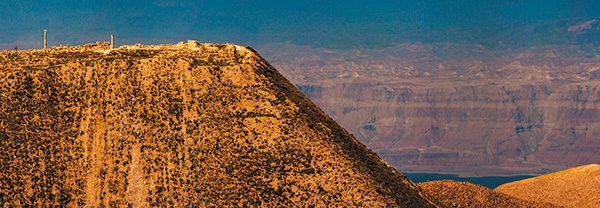
This is the story of the re-erection of two ancient Herodian columns—one Doric, the other Ionic—on the basis of the principle of anastylosis at the archaeological site of Machaerus in Jordan.
Machaerus, of course, is the dramatic Dead Sea palace-fortress where Salome danced and John the Baptist was beheaded.a
Anastylosis is a Greek term used by architects and archaeologists to refer to the restoration of an ancient structure using only the original architectural elements to the greatest extent possible. One of the most famous examples of anastylosis is the 19th-century restoration of the Parthenon in Athens. Our much more limited anastylosis at the Machaerus hilltop was undertaken during the spring of 2014.
Naturally, we must be confident of the original form of the part of the structure we are restoring. And that has been our assignment at Machaerus. The fortified palace of Machaerus was built by Herod the Great in about 30 B.C. on the ruins of the Hasmonean fortress of the Jerusalem high priest and monarch Alexander Jannaeus. The heart and center of this dramatic hilltop structure overlooking the Dead Sea was the royal courtyard.
Already a library member? Log in here.
Institution user? Log in with your IP address.

